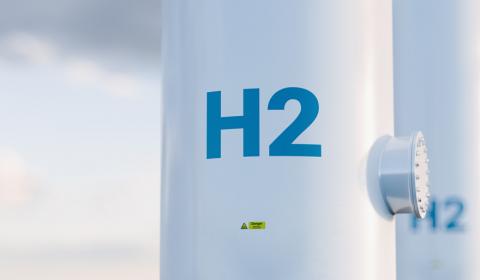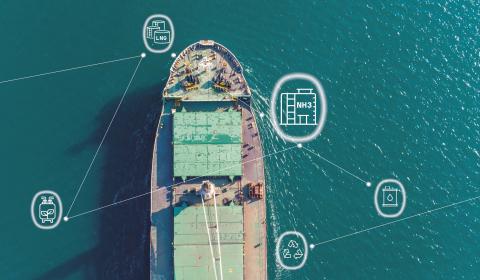
Regulating hydrogen fuel for inland navigation vessels
As the energy transition accelerates, hydrogen is increasingly viewed as a top contender among alternative fuel solutions and a hot topic for environmentalists. Discussed at length at the COP26 Hydrogen Transition Summit, and receiving increased investment from governments worldwide, hydrogen represents a growing and vital market. It has gained momentum in recent years as technology matures, and the price gap with conventional technologies narrows.
By switching to hydrogen as fuel, ships can minimize emissions, limiting air and water pollution. This is particularly important for inland navigation vessels (INV), which travel on freshwater systems—often through heavily populated areas.
Hydrogen may be used in fuel cells, or in internal combustion engines. In the former, hydrogen is converted into electricity to power ships, thus avoiding harmful emissions. If the fuel cell operates at a sufficiently high temperature, its waste heat may also be recovered in onboard heating systems. Internal combustion engines using hydrogen are increasingly sparking manufacturer’s interest. In these engines, hydrogen can either be mixed with other fuels to improve combustion and reduce emissions, or used on its own.
The general risks associated with hydrogen are well known, but its application in shipping entails specific challenges in terms of transportation, bunkering, storage and use. For shipowners, this can lead to a long list of questions, and the need for guidance in integrating this crucial zero-carbon fuel onboard.
What makes hydrogen a challenge
Special care is required when handling hydrogen as it is flammable, explosive and prone to leak. Considering the additional risk when stored at high pressures or very low temperatures, regulations aim at obtaining a risk level similar to other alternative fuel technologies. By setting clear requirements these risks can be minimized for applications of hydrogen fuel in shipping.
Driving change through regulation
Regulatory bodies are getting to work to set requirements for safety measures and installation requirements for INV owners. Bureau Veritas is participating in a temporary working group, which the European Committee for Drawing Up Standards in the Field of Inland Navigation (CESNI) has assigned to prepare new technical requirements. Directed at INVs, these regulations address the bunkering, storage, distribution and processing of alternative fuels, including hydrogen.
CESNI’s goal is to improve the safety of INVs using alternative fuels as a primary energy source or to power propulsion systems. New fuel cell requirements should be adopted in October 2022 and enter into force in January 2024. This would be followed by requirements for hydrogen storage both as a liquid and a gas, to be entered into force in 2025.
Our role in securing hydrogen
To help INV owners and operators safely transition to zero-carbon fuels, Bureau Veritas is developing a notation for hydrogen storage, distribution and use within an internal combustion engine. The associated notations hydrogenfuel and HYDROGEN-PREPARED are planned to be released in 2022, in complement to our 2021 fuel cell notation. The former will replace the existing hydrogencell notation for inland vessels and offers guidelines for the use of hydrogen as fuel onboard. The latter prepares ships to switch to hydrogen fuel later on.
YOU MAY ALSO LIKE










